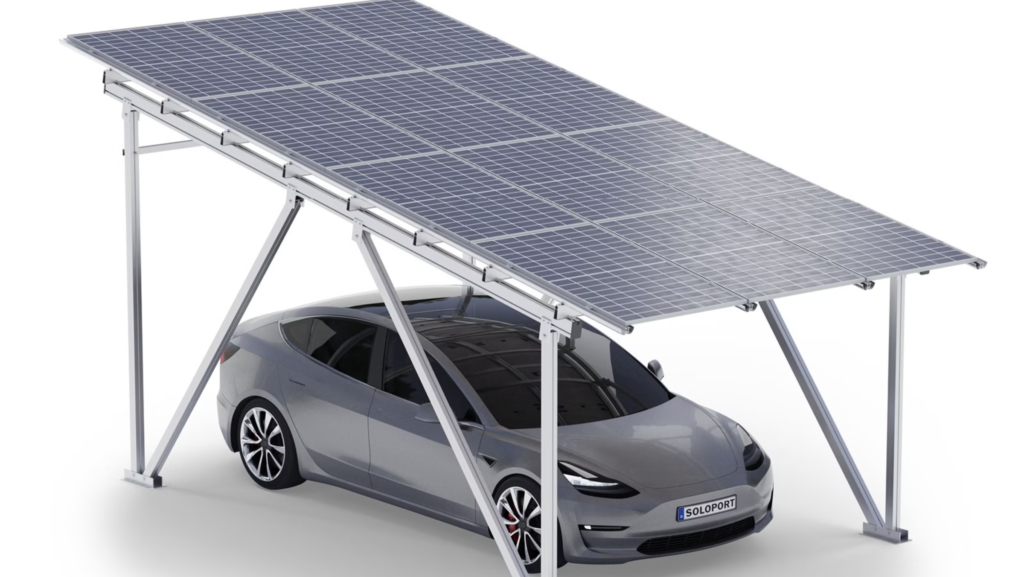During the installation of solar panels, lightning protection and grounding are crucial steps, as they directly affect the safe operation of photovoltaic systems. The following are the matters needing attention regarding lightning protection and grounding during the installation of solar panels:
First, grounding system design
Grounding resistance requirements:
The grounding resistance of the solar panel array should comply with the relevant standard requirements. Generally, the grounding resistance should be less than 10 ohms or even lower. The magnitude of the grounding resistance directly affects the discharge efficiency of the lightning current. An excessively high resistance will prevent the lightning current from being released rapidly, increasing the risk of system damage.
Selection of grounding electrode:
The grounding body can adopt a combination of vertical grounding electrodes (such as hot-dip galvanized Angle steel, copper-clad steel grounding electrodes, etc.) and horizontal grounding electrodes (such as hot-dip galvanized flat steel). The material of the grounding electrode should be selected from those with good electrical conductivity, corrosion resistance and long service life.
Grounding grid layout
The metal brackets of the solar panels are connected to the earth by laying grounding grids. Grounding grids can be copper strips, copper bars, exposed steel mesh on the copper surface, etc. Bury the grounding grid underground to connect it with the underground grounding body as a whole, thereby achieving effective guidance and dispersion of current.
Second, installation of lightning protection facilities
Lightning rod or lightning belt
Install lightning rods or lightning belts at the highest point or around the solar panel array to attract lightning and conduct it to the ground. Lightning rods or lightning belts should be kept at a certain distance from solar panels to prevent lateral flashover during lightning strikes and ensure that their protection range covers the entire photovoltaic array.
Down-conductor installation
The connection between a lightning rod or lightning belt and the grounding system needs to be accomplished through a down conductor. The down conductor should use a thick enough wire to reduce the resistance when lightning current passes through, and it is necessary to ensure that it is firmly fixed to avoid shaking in strong winds.
Lightning arrester installation
Surge protectors (SPDS) are installed at the output end of photovoltaic panels, the input end of inverters and the front end of important electrical equipment to limit the damage caused by overvoltage to the equipment. The selection of lightning arresters should be determined based on parameters such as the voltage level and rated current of the line, and they must have sufficient current-carrying capacity to withstand the lightning impulse current.
Third, equipotential bonding
The component border is connected to the bracket:
The frame of the solar panel and the bracket should be connected at the same potential to ensure that the potential of the component frame and the bracket is consistent, reduce the potential difference caused by lightning strikes, and avoid local overvoltage. Equipotential bonding should use dedicated copper strips or wires, and ensure that the connection points are tight and have good electrical conductivity.
Internal equipotential bonding of the system:
All metal components and structural parts within the photovoltaic system should be connected at the same potential, such as inverters, distribution boxes, and solar panel brackets, to ensure that all metal components within the system are at the same potential and to prevent potential differences caused by lightning induction from damaging the equipment.
Fourth, installation precautions
Selection of grounding wire:
Select grounding wire materials with low impedance, low inductance and low voltage drop, such as copper bars and copper strips. The grounding wire should be as short as possible and avoid crossing with other wires, metal structures, etc. as much as possible. Wiring should follow the standards for roads, pipelines, etc., to avoid damaging other equipment.
Regular inspection and maintenance:
The lightning protection system is not a one-time solution. Regular inspection and maintenance are of vital importance. This includes checking the integrity of lightning rods and lightning arresters, testing the grounding resistance value, and verifying the functional status of lightning protection devices to ensure that the entire lightning protection system is always in the best condition.
Follow safety regulations:
During the installation process, relevant safety regulations should be strictly followed, such as wearing anti-static clothing and using insulating tools, to ensure the safety of construction personnel.
Fifth, handling of special circumstances
Soil area with high resistivity
In areas with high soil resistivity, special measures may need to be taken, such as adding grounding electrodes, using flexible grounding technology or adopting deep well grounding, etc., to reduce grounding resistance.
Complex terrain conditions:
When installing solar panels on sloping land or complex terrain, it is necessary to calculate and shorten the array spacing or increase the retreat spacing based on the slope, and set up the grounding system reasonably to ensure the lightning protection and grounding effect.


